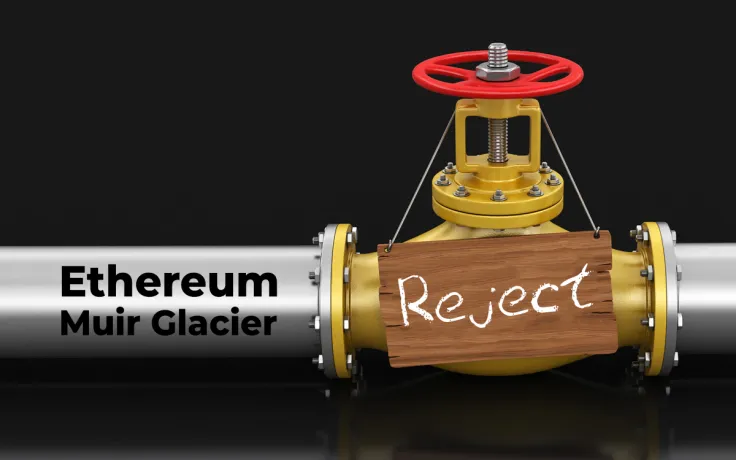
On January 2, 2020, Ethereum's Muir Glacier update was activated. All of the major Ethereum network clients uploaded releases that are compatible with the Muir Glacier. However, not all of them are functioning in a consistent manner.
All but One
Today, Joseph Delong, Ethereum Researcher and Senior Software Engineer at ConsenSys, proclaimed the Muir Glacier as a successful update. Shortly thereafter, Mr. Delong's proclamation came back to haunt him.
Some one wake up @nethermindeth your nodes are rejecting blocks after the fork. pic.twitter.com/bzohAI1k6s
— Joseph Delong (@josephdelong) January 2, 2020
Nethermind, an Ethereum client written in C++ .NET Core, was unable to operate with the post-upgraded blocks. As a result, all users that utilize this client lost synchronization with the Ethereum mainnet.
Nethermind is Ethereum's third most popular implementation. It is currently responsible for 43 operators of the mainnet, or 0.6 % of the whole network.
Update: Fixed
It looks like the Nethermind team heeded to the voice of the eminent developer. About half an hour ago, the Nethermind team came out with an emergency release:
1.4.2 fixes the Muir Glacier chainspec configurationhttps://t.co/uA0KsOtNOE
(upgrade to 1.4.2 is not required - you can just update the chainspec file and restart the node)— Nethermind (@nethermindeth) January 2, 2020Advertisement
According to their announcement, the Chainspec file was corrupted during the upgrade. Therefore, the Ethereum's Nethermind operators should download this file and restart their nodes.
The Muir Glacier update is one of the last upgrades for the Ethereum 1.0 network. It delays the infamous "difficulty bomb" of Ethereum, which may have caused the potential collapse for operations.
Have you ever run an Ethereum node? Which implementation do you prefer? Don't hesitate to write in the Comments Section below!

 Dan Burgin
Dan Burgin Vladislav Sopov
Vladislav Sopov U.Today Editorial Team
U.Today Editorial Team